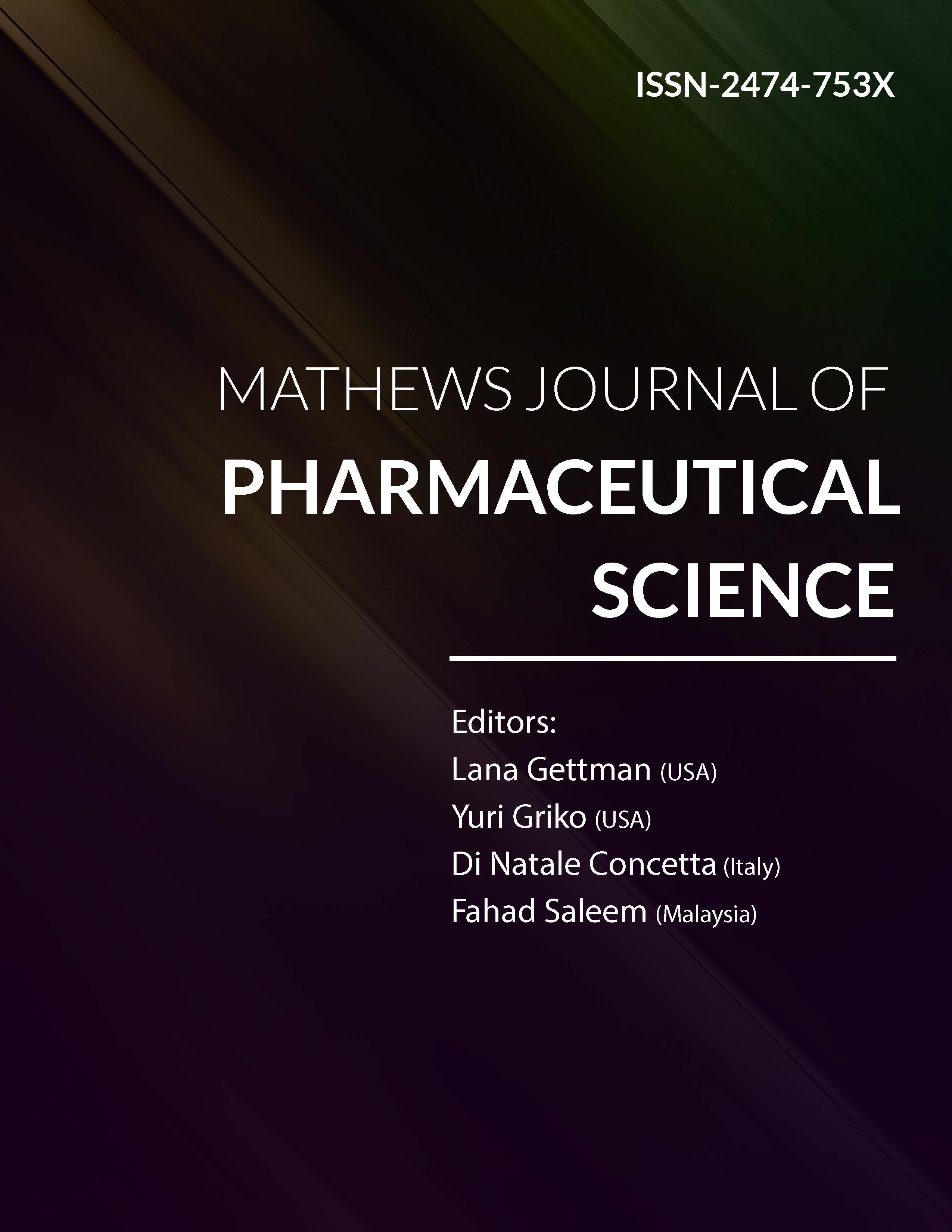
Information Links
Previous Issues Volume 8, Issue 1 - 2024
Formulation, In-Vitro and In-Vivo Evaluation of Lamivudine-Loaded Solid Lipid Nanoparticles (SLNs)
Amarachi Salome Chime1, Chekwube Andrew Ezegbe1,3,* Chidinma Judith Iyanyi1, Chukwunwike Godswill Onunkwo1, Amarachi Grace Ezegbe2, Nnedimma Pauline Okafor1
1Department of Pharmaceutical Technology and Industrial Pharmacy, Faculty of Pharmaceutical Sciences, University of Nigeria Nsukka, Enugu State, Nigeria
2Department of Home Science and Management, Faculty of Agriculture, University of Nigeria Nsukka, Enugu State, Nigeria
3Federal University of ABC (UFABC), Santo Andre, Brazil
*Corresponding author: Ezegbe Chekwube Andrew, Department of Pharmaceutical Technology and Industrial Pharmacy, Faculty of Pharmaceutical Sciences, University of Nigeria Nsukka, Enugu State, Nigeria & Federal University of ABC (UFABC), Santo Andre, Brazil, Tel: +2348038042802, E-mails: [email protected]; [email protected]
Received Date: May 20, 2024
Published Date: June 13, 2024
Citation: Chime AS, et al. (2024). Formulation, In-Vitro and In-Vivo Evaluation of Lamivudine-Loaded Solid Lipid Nanoparticles (SLNs). Mathews J Pharma Sci. 8(1):28.
Copyrights: Chime AS, et al © (2024).
ABSTRACT
Background: The solubility and permeability of drugs could be improved using lipid based drug delivery systems (LBDDS). Drugs are usually classified into four groups according to Biopharmaceutical classification system. Lamivudine is a class 3 drug with high solubility and low permeability. Objectives: Lamivudine-loaded solid lipid particles were formulated and evaluated using different lipid matrices consisting of phospholipon 90H® and softisan® 154 in the ratio of 1:2, and in-vitro and in-vivo characterizations were done on solid-lipid nanoparticles (SLNs). Materials/Method: fusion method was used in the preparation of the lipid matrices using mixtures of phospholipon® 90H and softisan® 154 in the ratio of 1:2. They were melted together in a crucible using a water bath and subsequently stirred with a glass stirrer at 70 oC to get a homogenous transparent yellow melt. The homogenous mixture was subsequently stirred at room temperature to get solidification. Results: The pH range of the batches formulated with lipid ratio 1:2 was 4.9. After 3 months interval, there was no significant change in pH of the formulated SLNs, which resulted in no significant degradation of the drug and excipients that were used in the formulation. The encapsulation efficiency (EE) of batch F1 was 84 %, while batches F2 and F3 were 75 % and 71 % respectively. Loading capacity for the three batches F1, F2 and F3 were 4.2 %, 7.5 % and 14.2 % respectively. The release studies obtained showed that the SLN had a percentage drug release of 63.5 % to 72.8 % after 10 h in simulated intestinal fluid (SIF) while in simulated gastric fluid (SGF), the percentage drug release was 49 % to 60 %. The in-vitro result obtained, showed that batch P (Pure standard lamivudine) recorded increased CD4+ count from day 0 to 21, while batch N (control) showed no sign of CD4+ count depletion. Conclusion: The method was used successfully.
Keywords: CD4+ Count, Lamivudine, Nanopartcles, Phospholipon 90H, Softisan®, Solid-Lipid Nanoparticle (SLN).